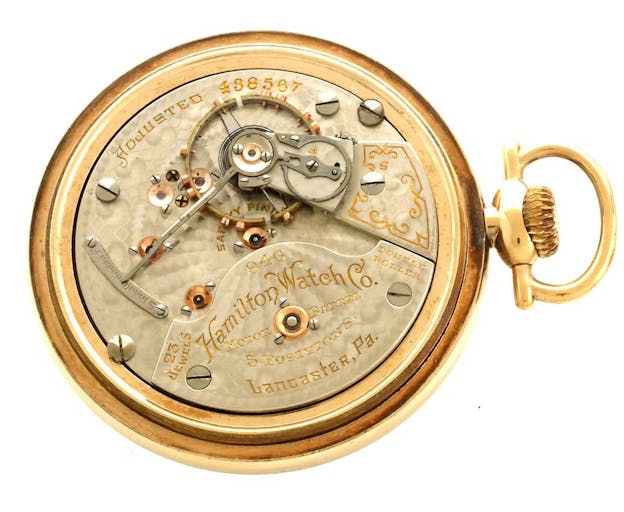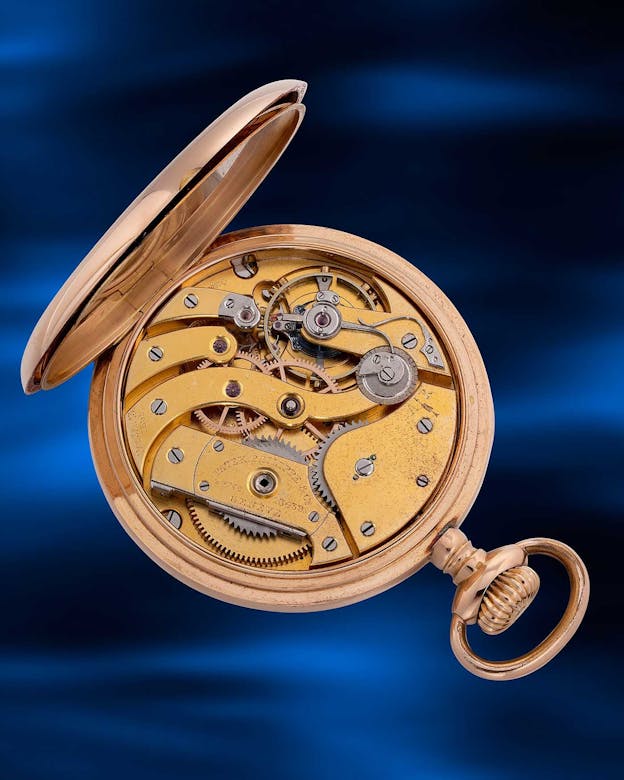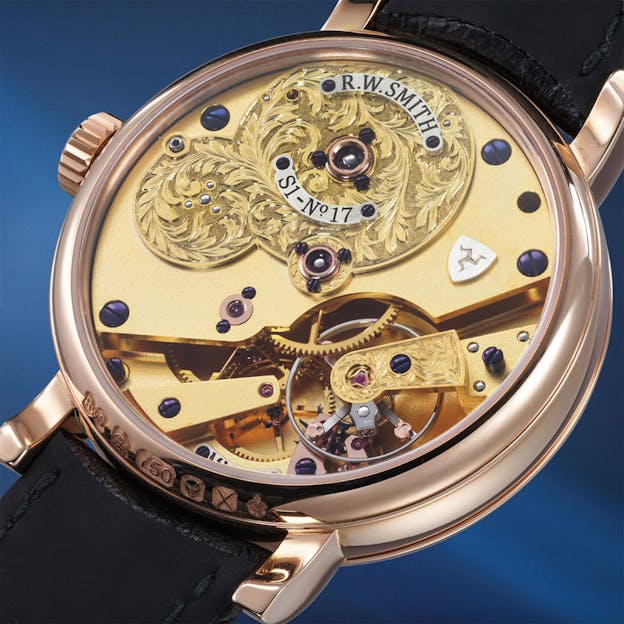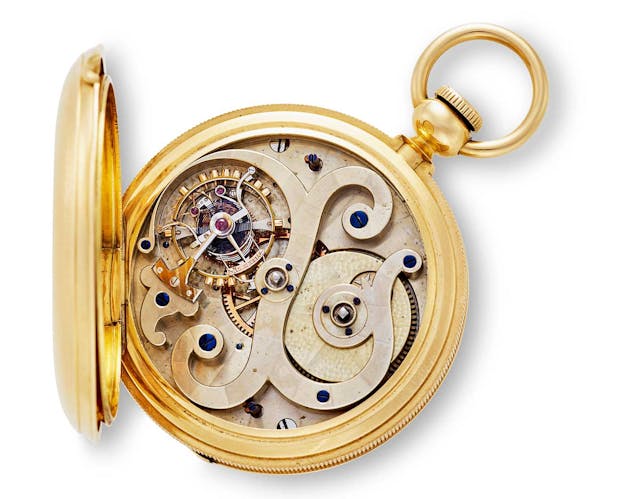Shapes Of Time: The Art And Aesthetics Of Designing A Watch Movement
How do watchmakers decide how a movement should look?
The subject of movement finishing is one that gets a lot of discussion (especially today, when it’s easier than ever to see images of finely finished, not so finely finished, and poorly finished watches) but the specific subject of movement design doesn’t as a rule. A movement may be very well finished, but if the design is visually awkward or clumsy, the watch will not succeed overall. Finishing’s obviously essential to the success of a watch, but it’s just part of the bigger picture and for a watch to be successful, it has to succeed in every aspect.
Mechanical Constraints On Movement Design
Virtually all watches have the same basic arrangement of gears, with variations depending on other complications, the number and placement of mainspring barrels, and so on. As a rule, the going train (gear train) of a watch, consists of the mainspring barrel, which drives, in order, the center wheel, third wheel, fourth wheel, escape wheel, and balance. In traditional movement design, the components were arranged to allow as large a mainspring and balance as possible, and so there is a noticeable family resemblance between hand wound movements.
Hand wound watch movements are generally classified as full plate, 3/4 plate, or full bridge depending on the arrangement of the plates and bridges. True full plate watches are extremely rare nowadays; they are characterized by an upper movement plate which covers the entire going train, with the balance elevated above the level of the plate.

Generally, full plate movements are found in larger pocket watches. They were especially favored by American and British watchmakers, who preferred sturdiness and rigidity over the more elegant full bridge designs. Three quarter plate designs were also favored in both countries and unlike full plate designs, you can occasionally find 3/4 plate movements even today; two of the best known makers are A. Lange & Söhne, and of course, Roger Smith, whose work is almost entirely in the traditional British movement design idiom, including the use of gilt finishing and the rejection of Swiss-French flourishes like Geneva stripes.

Full bridge movements can come in a number of different configurations. The term “bridge” in watchmaking generally refers to a span of metal fixed at at least two separate points with two or more screws; a single projection of metal fixed with (usually) a single screw at its base, is called a “cock.” The etymology of “cock” as a name for a watch movement component is obscure, although the very elaborately engraved balance cocks, which covered the entire balance, that are found in early watches, may have been named after the weathercocks found on church steeples.

The most traditional form of the full bridge movement, as seen in above in a Patek Philippe Chronometro Gondolo from the early 1900s, has a separate bridge for the ratchet wheel and mainspring barrel, another for the crown wheel, an s-shaped central bridge for the center and third wheels, and separate cocks for the fourth wheel, escape wheel, and the balance. The sinuous shape of the center and third wheel bridge is really the defining feature of the movement and the visual harmony it creates is difficult to improve on.
Automatic movements tend to be more difficult to design in a way that’s visually appealing as there is simply more visual clutter. The basic going train is still there, of course, but usually, the movement architecture is obscured by the rotor and the extra gears for the automatic winding train. You can kind of get around this with micro-rotors or with peripheral rotors, but I’ve never seen an automatic movement which purely from an aesthetics standpoint, can really compete with a well designed hand-wound caliber. Most of the independent watchmakers who’ve made a name for themselves, or are trying to do so, have built their reputations on hand wound movements rather than on automatics (although there are exceptions; Laurent Ferrier makes considerable use of the micro-rotor).
Modern Movement Design And Architecture
With all that said, we can now look at some modern examples. The basic types listed above are straightforward in what defines them, but there are of course an almost infinite number of variations on the theme.

The Roger Smith Series 1 caliber is an example of a sort of modified 3/4 plate, in that Smith has added a separate cock for the fourth wheel. I’ve seen these types of movements also called “half plate” although Smith refers to the configuration as a 3/4 plate; on the other hand, the Royal Observatory calls this Earnshaw marine chronometer a “half plate” movement; the distinction seems at least somewhat meaningful if you want a separate classification for movements with a single plate for the mainspring, crown wheel, and going train but with separate cocks for the fourth and/or escape wheels.

Similarly, Lange refers to its calibers with a separate escape wheel cock as 3/4 plate movements. In both instances, from an aesthetics standpoint, you are getting a design chosen as much for its historical antecedents as anything else; Smith is working in the English hand-made, high grade pocket watch tradition (with the elaborate engraving on the crown and ratchet wheel cover irresistibly reminiscent of the incredibly intricate engraving on the balance cock of Harrison’s H4 marine chronometer) and in the case of Lange, there’s an intended evocation of the Glashütte pocket watch tradition, further reinforced by all those screwed in chatons, which are also primarily a design rather than a technical decision. In both cases, the makers are connecting the dots between their modern work and the pocket watch world, and specifically seeking to evoke a particular design idiom. And, in both instances, there is a deliberate evocation of a philosophy that underscores the preference for a commitment to precision over the elegant flatness possible with full bridge calibers.

Here’s another modern example of a 3/4 plate movement, this time from Grand Seiko. By contrast, there’s no deliberate evocation of the pocket watch tradition here; this is simply a movement designed for maximum longevity, strength, and to meet certain standards of precision (Grand Seiko caliber 9S64).

The Daniel Roth Extra Plat caliber DR002 is a hand wound movement with a single bridge for the crown wheel and ratchet wheel/mainspring barrel and center wheel, and a separate bridge for the third, fourth, and escape wheels. It’s not exactly a full bridge movement, but the precise classification matters much less than the specific design decisions that have been made with respect to the shape and arrangement of the bridges and the boundaries between them. I’ve gone into a ton of detail on this aspect of the movement in our Hands On story from last month, but the gist of it is that forms of the components and how they’ve been designed to harmonize visually with each other, rewards very close examination. The fact that the movement is seamlessly integrated visually with the rest of the watch doesn’t hurt one bit either.


The Dufour Simplicity is a similar case in point. If you really want to get technical about it, as with the DR002 caliber the Simplicity caliber’s not a full bridge movement either, but the aesthetics of the design are so beautifully thought out that nobody could possibly care less. Once again, wonderful use is made of the logarithmic spiral of the going train pivots which is expressed in the clarity of the outlines of the movement bridges; the watch movement has the visual equivalent of the musical harmony of a Bach canon. The whole thing is enormously greater than the sum of its parts, though; the single bridge for the crown wheel, mainspring barrel, and center and third wheels means more real estate for those luscious Geneva stripes, which look good enough to eat.

Now this is the Hervé Schlüchter Philosophical Regulator and you don’t need me to notice that this is designed to a totally different philosophy than the DR002 caliber or the Simplicity caliber (Schlüchter studied movement finishing with Philippe Dufour but has obviously struck out on his own where movement layout is concerned). You mightn’t believe it but the basic gear train layout is exactly the same as in the Simplicity and DR002 calibers – there is a crown wheel, mainspring barrel/ratchet wheel, center, third, fourth and escape wheels, and balance at that’s all she wrote – except the actual design is absolutely Rococo in its complexity. The movement has only one actual bridge – for the ratchet wheel/mainspring barrel and the crown wheel – and everything else gets its own cock; if you start trying to count the number of anglaged edges on your fingers or the number of sharp inner corners you’re going to run out of fingers mighty quick. Now this is where matters of taste start to enter the picture – is this sort of deliberately florid complexity designed to showcase the art of hand finishing as an end in itself, simply too much of a good thing? Or does the traditionalism of the DR002 caliber and the Simplicity caliber leave you wanting something more idiosyncratic and overtly dramatic?

This is the J.N. Shapiro Resurgence, in one of several possible configurations. This particular variant on the Resurgence caliber is once again, exactly the same in basic movement layout as any of the other hand wound movements we’ve looked at (well, we should make an exception for the Lange L901.0 caliber, which has a lot of bits in different places than would be conventional thanks to the dial layout, power reserve, big date, and double mainspring barrels). Despite the initially somewhat baroque impression the movement makes, this is at its heart a fairly traditional movement and one of the very few examples of a classic full-bridge layout in a modern wristwatch. While the crown wheel and ratchet wheel/mainspring barrel are under a single bridge, you’ve still got that classic S-shaped center bridge, although here we have a little twist on business as usual – the tip of the center bridge twists around to accommodate the pivot of the movement fourth wheel, while there’s still a separate cock for the escape wheel; that cock has a very nice flourish – there is a right angled inner corner, just where the balance passes under the escape wheel cock.
Here the movement design appeals to tradition, but Shapiro clearly wants to put his own stamp on the basic movement layout and that’s clear both in the overall movement design, and in the decision to use a kind of wave-pattern finish on the bridges rather than conventional Geneva stripes. The shape of the center bridge in particular sets this apart from a standard bridge movement, with the loop at the end for the fourth wheel pivot and its jewel lending an almost calligraphic flourish.
Now, lest you think that elaborately florid shapes are a sign of modern decadence and the deterioration of practical considerations in favor of the purely cosmetic, check out this bit of mid-19th century craziness.

This is a pocket tourbillon, by Ernest Guinand, cased and sold by J.E. Caldwell & Co. in Philadelphia. The movement is keywound and set (you can see the arbors for winding and setting; they’re the square posts on the center wheel and mainspring barrel) and if anyone can make an argument that the shape of the main bridge and tourbillon cock are motivated purely by engineering considerations, I’d like to hear it. The whole thing is just flat out weird – if Dr. Seuss had decided to design a tourbillon he might have ended up with something like this. That this is obviously also technical watchmaking of the highest order is undeniable and makes the whole thing even more bizarre (Guinand was famous for the lyre shaped tourbillon cage in this watch and it’s known as a Guinand type tourbillon even today).
And you can contrast this to some of Breguet’s tourbillons – Breguet was an absolute technical genius and one of the greatest inventors in the history of mechanical horology, but his watchmaking is characterized by an almost clinical obsession with pragmatism.

This is Breguet no. 1176, four minute tourbillon and oh boy it’s glorious, but nobody would ever call his movement layout wacky which is an adjective I would fight for as appropriate to that Guinand tourbillon.
I think the fact of the matter is that watchmakers are as inclined to want to exercise some creativity in movement design as anyone else and for sure, that has been true almost from the beginning, with movement layout and decoration often motivated mostly by pragmatic considerations but also sometimes by a desire to make something beautiful and unusual for its own sake. Personally I wonder about the emphasis on finishing for its own sake today, and its handmaiden, highly complex movement layouts for simple watches – I’m not in the “definitely too much of a good thing” camp, but I could see why someone would adopt that position. But you certainly can’t say it’s a manifestation of post-pragmatic, languidly indolent decadence, not if you look at what people like Guinand were getting up to.
I remember many years ago reading a book on design which made the point that anything humans make is in a very real sense, designed and it’s as true of watch movements as anything else. I gotta wonder what was going through Guinand’s head when he came up with that Lovecraftian bridge, though. You could joke that maybe he’d found some special mushrooms growing out of a cow pie in one of those meadows in the Vallée de Joux, but I think the real answer is simpler (and more dignified). He was a Swiss watchmaker, which is a buttoned down profession in a famously buttoned down country but clearly, he had a creative iconoclast’s streak that had to come out sooner or later, one way or another.
For a look across a broad spectrum of movement designs and expressions of movement aesthetics, check out our curated collection of hand wound, display back watches. Variety is the spice of life.

